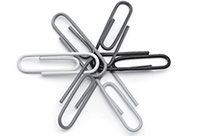
1
SMILE
Activate Immediate Connection
A man without a smiling face must not open a shop.
—CHINESE PROVERB
Do you want to get happy at work immediately? Catch my smile. Did you feel it? Quick, toss the smile to the person on your left (or right) and set off a chain reaction of positive feelings. When you smile at people, strangers included, 80 to 90 percent will return the gesture with a grin, even if they don’t want to. We are wired from birth to mimic the people around us. Try contaminating your occupational ecosphere with happiness. Even a well-placed, forced smile is a mood enhancer.
Humans are so inherently social that the best predictor of happiness is not gender, religion, health, or income—it’s the strength of bonds with family, friends, and coworkers. Frequently occurring positive interactions are powerful. Someone who has a dozen mildly nice things happen each day is likely to be happier than someone who has a single truly amazing experience in his or her life. So why did I start my book off with a smile? Smiling is a great example of a simple act that’s powerful, controversial, and often omitted from our daily repertoire, potentially to our own detriment. “Smile more” can seem like a command—I am being asked to grin so that you feel comfortable; my needs don’t matter. Strangers demanding that you “Smile!” can feel patronizing, but that is not the intent of this chapter. I’m inviting you to make an active choice to smile because it benefits you as well as the recipient of your warmth. Smiling is free and efficient. It asserts your intention to form a mutual, shared, equal connection. In challenging situations your smile can instantaneously and, often unconsciously, relax those around you.
Smiling is the most potent of tools in nature’s cooperation workshop. In Born to Be Good, Dacher Keltner explains that a smile activates our frontal lobe (the reward center of the brain) and reduces stress for the person smiling, as well as the person on the receiving end of the smile.
A study from Penn State University found that people who smile appear to be more likeable, courteous, and even competent. The Ochsner Health System, a large Louisiana health care provider, implemented what it calls the “10/5 way.” Employees are encouraged to make eye contact if they’re within 10 feet of someone and say hello if they’re within 5 feet. The result? An increase in patient satisfaction and referrals. Senior, junior, or middle manager—make an effort to smile and watch the room (and your mood) brighten. Want to connect first? Be the first to smile.
THIS IS FOR YOU IF
• Spreading instant happiness appeals to you.
• You want to build a rich network of supporters.
• You want to feel like you belong when you arrive at work.
• Staring at your shoes hasn’t stopped you from tripping over your own bad attitude.
TAKE ACTION
![]() Smile as you enter the building, walk the halls, or join a meeting room.
Smile as you enter the building, walk the halls, or join a meeting room.
![]() Put your phone in your pocket and make eye (and smile) contact as you transition from place to place.
Put your phone in your pocket and make eye (and smile) contact as you transition from place to place.
![]() Spread delight. Dare to be the first to turn up the corners of your lips.
Spread delight. Dare to be the first to turn up the corners of your lips.
![]() To generate an inner grin that lights up your face, think of something that delights you. If you are desperate, visualize speech bubbles over your coworkers’ heads filled with quotes that will make you giggle.
To generate an inner grin that lights up your face, think of something that delights you. If you are desperate, visualize speech bubbles over your coworkers’ heads filled with quotes that will make you giggle.
![]() Learn from a child. Children smile up to 400 times a day.
Learn from a child. Children smile up to 400 times a day.
KEEP IN MIND
• Be careful not to smile when delivering bad news. It can rob you of credibility and generate confusion.
• Find the balance that works for you. Smiling is effective, but being overly cheerful, especially for women, can undermine your authority.
